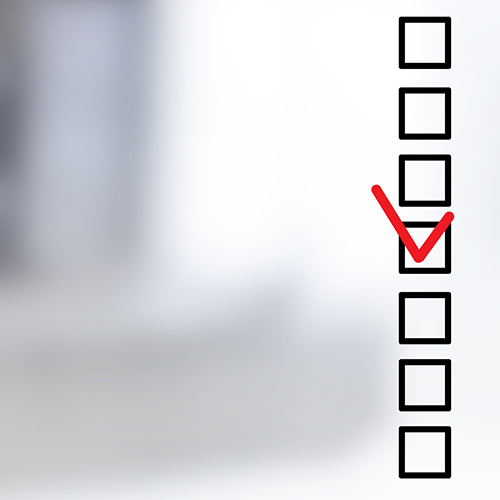Using Checklists for Fewer E&O Claims, Greater Sales

By: John Nesbitt
In most states, the duty of a typical independent insurance agent or broker—one who has no “special relationship” with the client—is simply to use reasonable care in procuring the insurance coverage requested by the client, or if such coverage cannot be obtained, to advise the client promptly.
But your client may be unaware that certain coverages are not included in a standard policy and must be added by endorsement or a separate policy. State law may not require you to recommend those additional coverages, but it may make sense to at least offer them.
Does the commercial property client want basic, broad or special form coverage? Actual cash value or replacement cost? Business income coverage? Does the general liability client have any additional insureds to include? Do they want employment practices coverage? Workers compensation? An umbrella?
Experienced agents or brokers ask these questions and more when working with new customers, but what if your employee forgets one or more of these topics? Do you and your employees ask each of these questions again at renewal, since client needs change over time? Importantly, do you document the discussion?
One proven way to ensure that available coverages and higher limits are always offered is to use a checklist. A good checklist includes coverage choices as well as optional coverages a client might want to accept or reject.
It also documents that the agent asked each of these questions and others, particularly when it includes a signature line at the bottom for the customer to confirm they have accepted and rejected the coverages as noted on the checklist.
When used consistently, agency checklists are a great loss prevention tool for both you and your client—and failing to use one as a routine part of procedures could be a problem when defending an errors & omissions claim.
Checklists probably do not create a higher duty than the general duty to procure the coverage requested, but failing to use the agency’s standard checklist allows for an argument that the agency failed to follow its own procedures. As long as checklists are used consistently, they will likely be helpful in defending a claim.
Should agencies develop their own checklists or purchase them? Purchasing industry standard checklists is a good way to ensure they are comprehensive and up to date. Many agency management systems include checklists as well, but remember: Their value is limited unless each agency employee uses the same checklist consistently.
Checklists are also a great way to sell more insurance. Some clients are only concerned with minimizing premium and will never even consider additional coverages or limits, but these clients are the most likely to suffer an un(der)insured loss and blame it on you. You may be surprised—once in a while, common sense prevails, and even the most miserly of clients chooses to buy additional coverage after going through a checklist.
If an agency faces an E&O claim and is insured under a Swiss Re Corporate Solutions policy, using checklists may provide another financial benefit. Under the Deductible Reduction feature, if an insured agency generates and maintains contemporaneous written documentation in the agency file of a client’s refusal to accept any type of coverage or limit offered by the agency, and a subsequent claim alleges the failure to secure such, 100% of the agency’s deductible for that claim will be waived up to a maximum of $25,000, or until dismissal of the allegations, whichever is first.
Agencies that consistently use coverage checklists reduce their E&O exposure by ensuring that a brief discussion occurs about available coverages and higher limits, and by providing highly credible documentation of the discussion if a dispute occurs later. Checklists also increase cross-selling opportunities and lead to additional sales of policies or endorsements the client may not have thought about.
John Nesbitt is an assistant vice president, claims specialist with Swiss Re Corporate Solutions and works out of the office in Kansas City, Missouri. Insurance products underwritten by Westport Insurance Corporation, Kansas City, Missouri, a member of Swiss Re.
This article is intended to be used for general informational purposes only and is not to be relied upon or used for any particular purpose. Swiss Re shall not be held responsible in any way for, and specifically disclaims any liability arising out of or in any way connected to, reliance on or use of any of the information contained or referenced in this article.
The information contained or referenced in this article is not intended to constitute and should not be considered legal, accounting or professional advice, nor shall it serve as a substitute for the recipient obtaining such advice.










